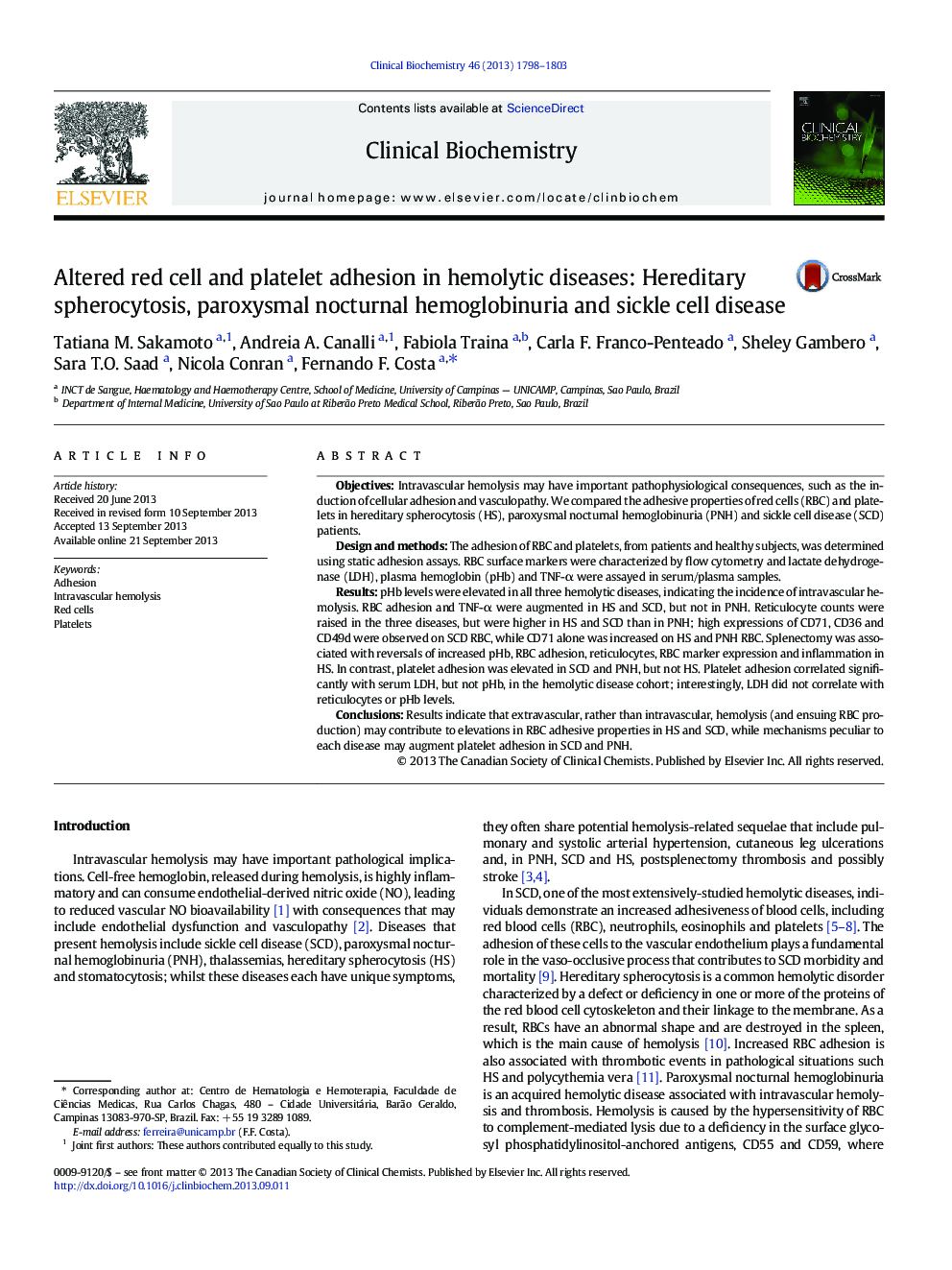| Article ID | Journal | Published Year | Pages | File Type |
|---|---|---|---|---|
| 1968650 | Clinical Biochemistry | 2013 | 6 Pages |
•Intravascular hemolysis may have important consequences, such as induction of cellular adhesion and vasculopathy.•The adhesive properties of RBC and platelets were compared in three hemolytic diseases.•Red cell adhesive properties were increased in sickle cell disease and hereditary spherocytosis, compared to controls.•Increased platelet adhesive properties were found in sickle cell disease and paroxysmal nocturnal hemoglobinuria.•Elevated RBC adhesion may reflect altered RBC production in hemolytic diseases.•Altered platelet adhesion probably involves mechanisms peculiar to each disease.
ObjectivesIntravascular hemolysis may have important pathophysiological consequences, such as the induction of cellular adhesion and vasculopathy. We compared the adhesive properties of red cells (RBC) and platelets in hereditary spherocytosis (HS), paroxysmal nocturnal hemoglobinuria (PNH) and sickle cell disease (SCD) patients.Design and methodsThe adhesion of RBC and platelets, from patients and healthy subjects, was determined using static adhesion assays. RBC surface markers were characterized by flow cytometry and lactate dehydrogenase (LDH), plasma hemoglobin (pHb) and TNF-α were assayed in serum/plasma samples.ResultspHb levels were elevated in all three hemolytic diseases, indicating the incidence of intravascular hemolysis. RBC adhesion and TNF-α were augmented in HS and SCD, but not in PNH. Reticulocyte counts were raised in the three diseases, but were higher in HS and SCD than in PNH; high expressions of CD71, CD36 and CD49d were observed on SCD RBC, while CD71 alone was increased on HS and PNH RBC. Splenectomy was associated with reversals of increased pHb, RBC adhesion, reticulocytes, RBC marker expression and inflammation in HS. In contrast, platelet adhesion was elevated in SCD and PNH, but not HS. Platelet adhesion correlated significantly with serum LDH, but not pHb, in the hemolytic disease cohort; interestingly, LDH did not correlate with reticulocytes or pHb levels.ConclusionsResults indicate that extravascular, rather than intravascular, hemolysis (and ensuing RBC production) may contribute to elevations in RBC adhesive properties in HS and SCD, while mechanisms peculiar to each disease may augment platelet adhesion in SCD and PNH.
